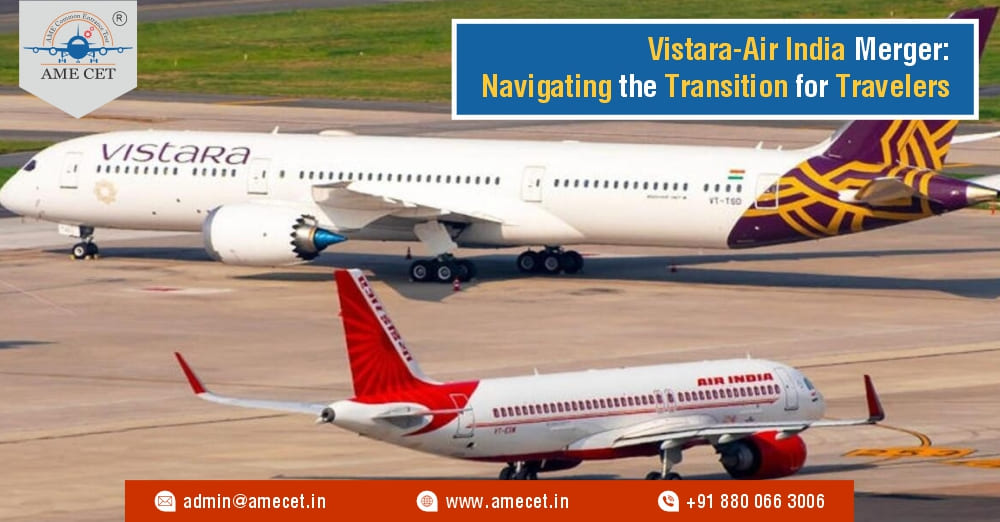
The recent merger between Vistara and Air India marks a significant shift in the Indian aviation landscape, promising enhanced services and connectivity for travelers. As the integration process begins, it’s essential for passengers to understand how to transition their bookings, manage baggage, and access lounges after November 12. This merger not only impacts customers but also highlights the importance of robust training and engineering within the airline industry.
Transitioning Bookings Post-Merger
As of November 12, Vistara and Air India will begin their full integration, meaning travelers with existing Vistara bookings need to be aware of how to manage their itineraries. Current customers are advised to keep an eye on their emails for notifications regarding their flights. Passengers can expect that all bookings made with Vistara will still be honored, but it’s crucial to check for updates related to flight times or changes in aircraft.
To manage bookings efficiently, travelers should log into the Air India website or app, where they can find their Vistara reservations using existing credentials. The transition aims to be as seamless as possible, but those with questions are encouraged to reach out to customer service for personalized assistance.
Baggage Management in the New Structure
With the merger comes the potential for a unified baggage policy, which can simplify the travel experience. Currently, each airline has its own baggage rules, and as they merge, customers should anticipate new policies that will likely be posted on the Air India website.
Passengers with connecting flights involving both airlines should be especially vigilant about how their baggage will be handled. Ground staff training will be crucial during this transition phase to ensure that baggage is managed efficiently across both airlines. Travelers can also expect enhanced baggage tracking capabilities as part of the integration, which is an increasingly important feature in modern airport management.
Lounge Access Changes
One of the most appealing aspects of airline travel is lounge access, particularly for frequent flyers and premium passengers. With the merger, the policies regarding lounge access may be restructured. Passengers who hold loyalty status with Vistara may find that their benefits are honored in the new framework, but it’s advisable to check the latest updates on Air India’s website for specific details.
The quality of lounge services will also be a focal point during this integration. As both airlines combine resources, customers can expect improvements in lounge facilities, which may enhance the overall travel experience. Cabin crew and ground staff training will play a key role in ensuring that service standards remain high as the two entities come together.
The Importance of Engineering and Maintenance
Behind the scenes, the merger also emphasizes the vital role of aircraft maintenance engineering (AME) and aeronautical engineering in ensuring safety and efficiency. AME teams will be crucial in the seamless integration of Vistara’s and Air India’s fleets, ensuring that all aircraft are compliant with safety regulations and operational readiness.
Both airlines have invested in extensive pilot training programs, and the merger will likely enhance these initiatives. By pooling resources, they can provide even better training for pilots, ensuring that both Vistara and Air India maintain their high safety standards. The integration of training programs will also involve ground staff and cabin crew, who are pivotal in delivering quality service to passengers.
Implications for Competition
The Vistara-Air India merger is significant not just for the two airlines but for the entire Indian aviation market. With the combined strength of these airlines, they will be better positioned to compete against other major carriers, such as IndiGo. The merger is expected to increase route networks and flight frequency, providing travelers with more options and potentially better pricing.
As airlines consolidate, the focus on operational efficiency and customer service becomes even more critical. By investing in ground staff training and ensuring that pilots are well-prepared, Air India can enhance its reputation as a leading airline. The new structure also allows for innovative approaches in airport management, optimizing the passenger experience from check-in to boarding.
Future Prospects for Travelers
For passengers, this merger offers a range of potential benefits. Improved connectivity, streamlined processes, and enhanced service quality are on the horizon. The integration process may take some time, but the long-term outlook suggests a more robust airline capable of meeting the needs of its customers effectively.
Travelers are encouraged to stay informed about changes and updates as the merger progresses. With the consolidation of services, loyalty programs, and operational frameworks, the combined airline aims to create a cohesive travel experience.
As the aviation industry continues to evolve, the successful integration of Vistara and Air India will serve as a model for other airlines considering similar mergers. By prioritizing aircraft maintenance, investing in training for pilots, cabin crew, and ground staff, and focusing on customer service, this merger could redefine the standards of air travel in India.
Conclusion
The Vistara-Air India merger represents a pivotal moment in the Indian aviation sector, with implications for travelers, employees, and the broader industry. By effectively managing the transition of bookings, baggage, and lounge access, passengers can look forward to a more connected and efficient travel experience. As the integration unfolds, the focus on engineering, training, and customer service will be key to the merger's success, ultimately benefiting all stakeholders involved
Category
-
Aircraft Maintenance Engineering (DGCA) (62)
-
(269)
-
Cabin Crew (1)
-
Aerospace Engineering (3)
-
Aeronautical Engineering (2)
-
Airport Management (5)
-
Aircraft Maintenance Engineering (EASA) (6)
-
Airport Ground Staff (1)
-
Commercial Pilot License(CPL) (51)
-
Aircraft Maintenance Engineering (BTech/BE) (1)
-
B.Sc. in Aviation (1)
-
AME CET (5)
